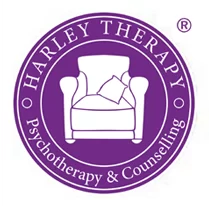The Different Types of OCD – The Truth You Need to Know

photo by Cottonbro for Pexels
by Andrea M. Darcy
TV and films now love to portray characters with obsessive compulsive disorder (OCD). Which has added awareness but also created unhelpful myths. So what are the actual different types of OCD you should be aware of?
The different types of OCD
It’s important to differentiate between types of OCD used as a short hand when discussing what you are going through, and clinical types of OCD, as in what you can actually be diagnosed with by a mental health professional.
So while on the internet you’ll see talk of things like ‘relationship OCD’, ‘pure OCD’, and ‘checking OCD’? These are NOT clinical terms you will be diagnosed with. They are simply useful ways to discuss what you are going through, but on the other hand can be confusing and misleading.
And what is also important to know is that the way OCD is now diagnosed and the ‘official’ different types of OCD… have changed! As recently as this year.
A quick recap about obsessive-compulsive disorder
It’s important to remember when discussing different types of OCD what obsessive-compulsive disorder actually consists of. Namely, obsessional thoughts and compulsive acts.
Obsessions are recurrent thinking in the form of ideas, images, or impulses. You can’t stop them coming into your mind again and again, in the same persistent and upsetting form, causing you great distress.
Compulsions are repetitive behaviours or rituals, where you can’t stop doing the same action even though it’s not at all enjoyable or useful. You believe that by doing this behaviour you will either prevent something bad from happening to you or others.
The ‘popular’ types of OCD
So let’s look at the common ways that OCD is described across the internet. You’ll see articles claiming that there are four types! Five, six, seven! And they way these types are organised is confusing, many mixing up types by obsessions and compulsions, or even by the areas of your life your OCD affects.
For example, a common list of ‘types of OCD’ on the internet is:
Checking (this is a compulsion, a behaviour where you check lights, stoves, security of your house, etc).
Contamination (this on the other hand is an obsession. You have many thoughts about dangerous germs and viruses getting to you or your loved ones).
 Symmetry (again, a compulsion. You are convinced if you don’t ritually line up and arrange things, bad things will happen to you or someone else).
Symmetry (again, a compulsion. You are convinced if you don’t ritually line up and arrange things, bad things will happen to you or someone else).
Rumination and intrusive thoughts (and back we go to an obsession. Violent, sexual, or uncomfortable thinking is an obsession that drives you to one of several compulsions).
Harm OCD is where your main obsession is harm coming to you or those you love.
OCD divided into types by the area of life it most affects includes things like ‘relationship OCD’ and ‘SO OCD’, sexual orientation OCD, where you have obsessions about your own sexuality.
Again, none of these are actually really forms of OCD. They are just different ways of talking about how OCD might affect your life.
And funnily enough, you never see talk of many now officially recognised related forms of obsessive-compulsive disorder, such as trichotillomania (hair pulling), tic-related OCD, and hoarding.
The OFFICIAL types of obsessive compulsive disorder
So let’s talk about the official types of OCD. That you can actually be diagnosed with.
The two main guidelines refereed to worldwide when diagnosing mental health disorders are America’s infamous “DSM”, the Diagnostic and Statistical Manual of Mental Disorders . And then the “ICD”, the World Health Organisation’s International Classification of Disease guide.
We have recently seen new versions of both manuals with an all new way of diagnosing OCD.
OCD originally was classified under ‘anxiety disorders’ in the DSM, and a ‘neurotic, stress-related, or somatoform (psychosomatic) disorder’ in the ICD. But new research shows OCD is more driven by brain patterns than anxiety. So OCD now is its own standalone category.
The DSM

Photo by cdc for unsplash
The DSM is now in its fifth edition. The DSM-5 , used to diagnose you if you live in America, now has the category of “Obsessive-Compulsive and Related Disorders’ (OCRD).
And as far as ‘types’ of OCD you can be diagnosed with, it refers to:
- presence of obsessions
- presence of compulsions
- or presence of both.
This is further divided into sub categories depending on how much you believe in your symptoms. So there is OCD with:
- good or fair insight: You know your beliefs are not true or may not be true.
poor insight: You think your OCD beliefs are probably true.
absent insight/delusional beliefs: You are completely convinced that your OCD thinking is true.
And finally, one further ‘sub type’ is if your OCD is tic-related, if you have a current or past history of tic disorder.
OCRD – Obsessive compulsive related disorders
Also included under the OCRD banner in the DSM-V are:
- body dysmorphic disorder (BDD)
- hoarding disorder
- trichotillomania (hair pulling)
- excoriation (skin-picking)
- substance/medication-induced OCRD
- OCRD due to another medical disorder
- other specified OCRD & unspecified OCRD.
The ICD
The new version, the ICD-11, was finally released in English form in February 2022, and is very similar to the DSM-5. It also places OCD its own classification of “Obsessive Compulsive and Related Disorders (OCRD)”.
Again similar to the DSM, it states that “obsessive-compulsive disorder is characterised by the presence of persistent obsessions or compulsions, or most commonly both.”
It includes most of the same disorders under ‘OCRD’ as the DSM-5, while also including:
- olfactory reference disorder
- hypochondriasis (health anxiety disorder)
- body-focused repetitive behaviour disorders.
I’m confused. So then what type of OCD to I have?
Officially, you would just have ‘OCD’ or ‘OCRD’ (obsessive-compulsive related disorder). Even if you don’t have many compulsions, if any, the diagnosis is still ‘OCD’.
And really, the type shouldn’t be the main focus. Getting the support you need should be. Obsessive-compulsive disorder is really hard to break through alone, but on the other hand can responds well to support and treatment.
Self-help is of course a great start, although one research study found that guided self help was useful to keep OCD symptoms from worsening, but did not diminish symptoms.
Therapy is recommended. CBT with exposure therapy has been found helpful, although the research is dated and and newer research is looking into rational emotive therapy as the best contender. Other recent research suggests mindfulness helps, finding positive results with mindfulness-based CBT (MBCT).
If you have suicidal thinking alongside your OCD, or it makes you want to hurt yourself, it’s particularly important that you seek support. Research does show that while it is not a large difference, OCD can place you more at risk for suicide.
Sick of letting your OCD dictate your life? We connect you with some of London’s most highly regarded talk therapists who can provide CBT therapy for OCD. Or use our sister booking site to find UK-wide OCD therapy with therapists ranked by other users.




